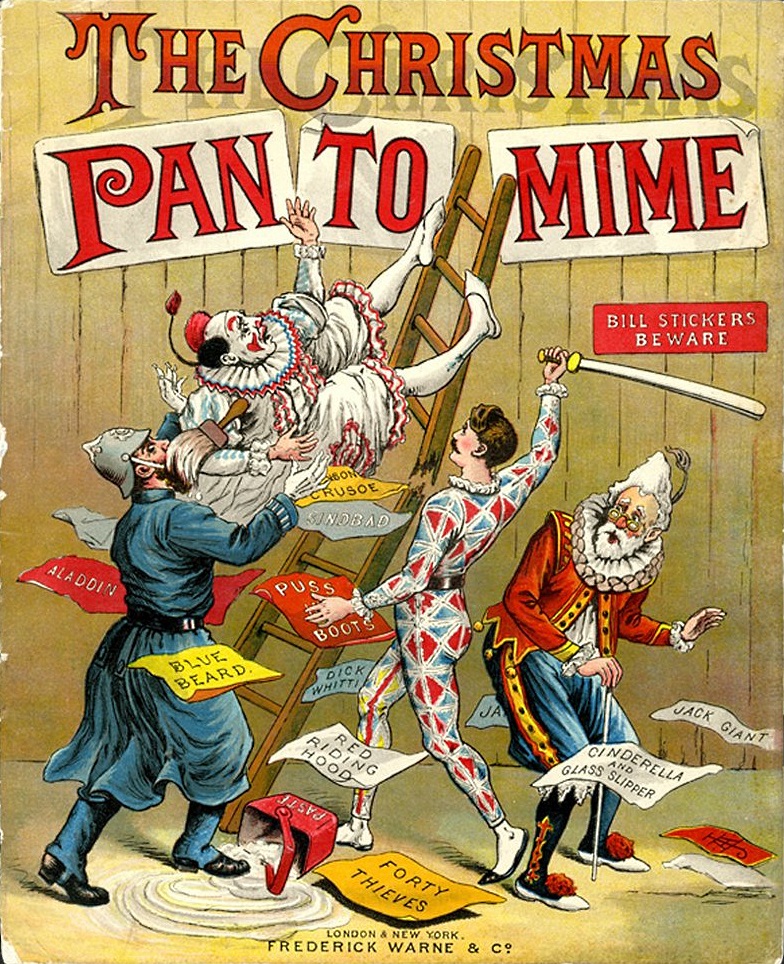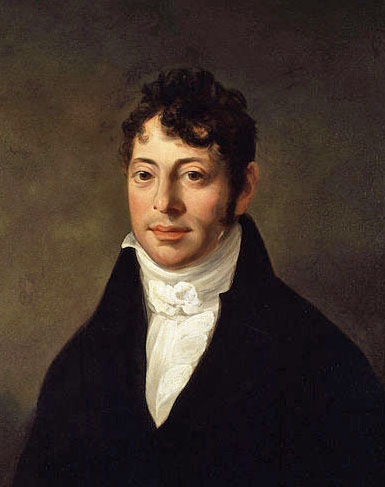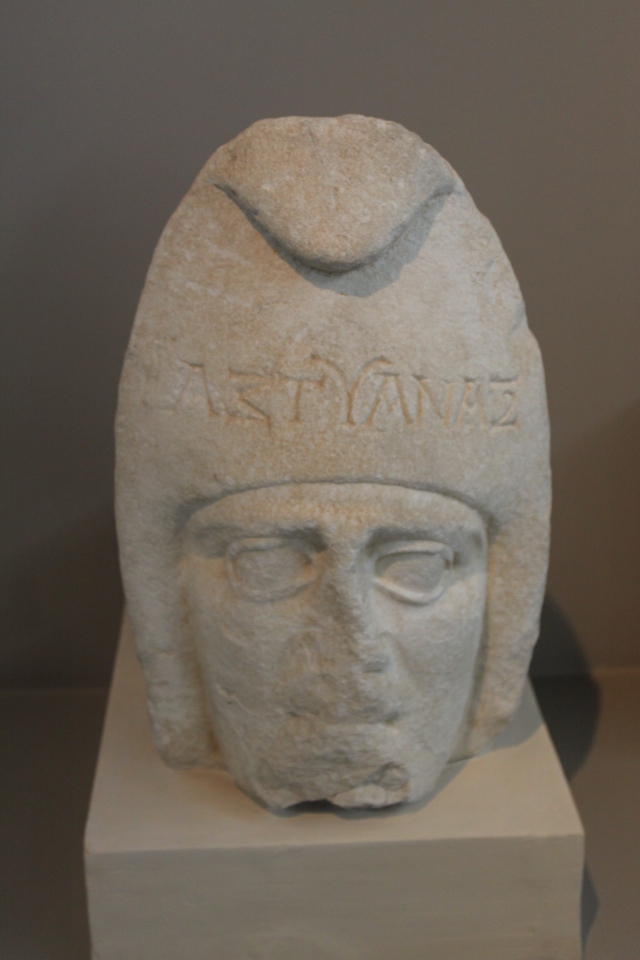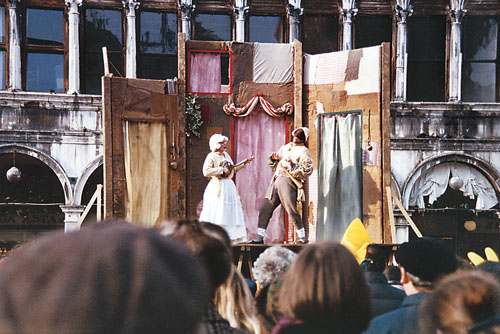|
Harlequin
Harlequin (; it, Arlecchino ; lmo, Arlechin, Bergamasque dialect, Bergamasque pronunciation ) is the best-known of the ''zanni'' or comic servant characters from the Italian language, Italian ''commedia dell'arte'', associated with the city of Bergamo. The role is traditionally believed to have been introduced by Zan Ganassa in the late 16th century, was definitively popularized by the Italian actor Tristano Martinelli in Paris in 1584–1585, and became a stock character after Martinelli's death in 1630. The Harlequin is characterized by his checkered costume. His role is that of a light-hearted, nimble, and Tricky slave, astute servant, often acting to thwart the plans of his master, and pursuing his own love interest, Columbina, with wit and resourcefulness, often competing with the sterner and melancholic Pierrot. He later develops into a prototype of the romantic hero. Harlequin inherits his physical agility and his trickster qualities, as well as his name, from a mischi ... [...More Info...] [...Related Items...] OR: [Wikipedia] [Google] [Baidu] |
Harlequinade
''Harlequinade'' is a British comic theatrical genre, defined by the ''Oxford English Dictionary'' as "that part of a pantomime in which the harlequin and clown play the principal parts". It developed in England between the 17th and mid-19th centuries. It was originally a slapstick adaptation or variant of the Commedia dell'arte, which originated in Italy and reached its apogee there in the 16th and 17th centuries. The story of the Harlequinade revolves around a comic incident in the lives of its five main characters: Harlequin, who loves Columbine; Columbine's greedy and foolish father Pantaloon (evolved from the character Pantalone), who tries to separate the lovers in league with the mischievous Clown; and the servant, Pierrot, usually involving chaotic chase scenes with a bumbling policeman. Originally a mime (silent) act with music and stylised dance, the harlequinade later employed some dialogue, but it remained primarily a visual spectacle. Early in its development, it ach ... [...More Info...] [...Related Items...] OR: [Wikipedia] [Google] [Baidu] |
Joseph Grimaldi
Joseph Grimaldi (18 December 1778 – 31 May 1837) was an English actor, comedian and dancer, who became the most popular English entertainer of the Regency era.Byrne, Eugene"The patient" Historyextra.com, 13 April 2012 In the early 1800s, he expanded the role of Clown in the harlequinade that formed part of British pantomimes, notably at the Theatre Royal, Drury Lane and the Sadler's Wells and Covent Garden theatres. He became so dominant on the London comic stage that the harlequinade role of Clown became known as "Joey", and both the nickname and Grimaldi's whiteface make-up design were, and still are, used by other types of clowns. Grimaldi originated catchphrases such as "Here we are again!", which continue to feature in modern pantomimes. Born in London to an entertainer father, Grimaldi began to perform as a child, making his stage debut at Drury Lane in 1780. He became successful at the Sadler's Wells Theatre the following year; his first major role was as Little ... [...More Info...] [...Related Items...] OR: [Wikipedia] [Google] [Baidu] |
Pantomime
Pantomime (; informally panto) is a type of musical comedy stage production designed for family entertainment. It was developed in England and is performed throughout the United Kingdom, Ireland and (to a lesser extent) in other English-speaking countries, especially during the Christmas and New Year season. Modern pantomime includes songs, gags, slapstick comedy and dancing. It employs gender-crossing actors and combines topical humour with a story more or less based on a well-known fairy tale, fable or folk tale.Reid-Walsh, Jacqueline. "Pantomime", ''The Oxford Encyclopedia of Children's Literature'', Jack Zipes (ed.), Oxford University Press (2006), Pantomime is a participatory form of theatre, in which the audience is encouraged and expected to sing along with certain parts of the music and shout out phrases to the performers. Pantomime has a long theatrical history in Western culture dating back to the era of classical theatre. It developed partly from the 16th century c ... [...More Info...] [...Related Items...] OR: [Wikipedia] [Google] [Baidu] |
Payne Brothers
Harry Payne (25 November 1833 – 27 September 1895) and Frederick Payne (January 1841 – 27 February 1880) were members of a popular Victorian era of British pantomime entertainers. They were billed as The Payne Brothers. Fred Payne became known for portraying Harlequin, and Harry became famous as Clown in the Harlequinade that followed Victorian pantomimes. Together, the brothers appeared in Gilbert and Sullivan's first collaboration, ''Thespis'', in 1871. Gilbert made references to the brothers in two of his ''Bab Ballads''. Biography Henry Edward Payne and Frederick Alexander Payne were the sons of William Payne, a classic pantomime artist, who invented much of the 19th-century Harlequinade action. Known as "the King of Pantomime", he trained with Joseph Grimaldi and the great Harlequin, Jack Bologna, at Sadler's Wells Theatre, and starred at Covent Garden in the 1830s and 40s. Boase, G. C.br>Payne, William Henry Schofield (1803–1878)" ''Oxford Dictionary of Nationa ... [...More Info...] [...Related Items...] OR: [Wikipedia] [Google] [Baidu] |
Commedia Dell'arte
(; ; ) was an early form of professional theatre, originating from Italian theatre, that was popular throughout Europe between the 16th and 18th centuries. It was formerly called Italian comedy in English and is also known as , , and . Characterized by masked "types", was responsible for the rise of actresses such as Isabella Andreini and improvised performances based on sketches or scenarios. A , such as ''The Tooth Puller'', is both scripted and improvised. Characters' entrances and exits are scripted. A special characteristic of is the , a joke or "something foolish or witty", usually well known to the performers and to some extent a scripted routine. Another characteristic of is pantomime, which is mostly used by the character Arlecchino, now better known as Harlequin. The characters of the usually represent fixed social types and stock characters, such as foolish old men, devious servants, or military officers full of false bravado. The characters are exaggerated " ... [...More Info...] [...Related Items...] OR: [Wikipedia] [Google] [Baidu] |
Pierrot
Pierrot ( , , ) is a stock character of pantomime and '' commedia dell'arte'', whose origins are in the late seventeenth-century Italian troupe of players performing in Paris and known as the Comédie-Italienne. The name is a diminutive of ''Pierre'' (Peter), via the suffix '' -ot.'' His character in contemporary popular culture — in poetry, fiction, and the visual arts, as well as works for the stage, screen, and concert hall — is that of the sad clown, often pining for love of Columbine, who usually breaks his heart and leaves him for Harlequin. Performing unmasked, with a whitened face, he wears a loose white blouse with large buttons and wide white pantaloons. Sometimes he appears with a frilled collaret and a hat, usually with a close-fitting crown and wide round brim and, more rarely, with a conical shape like a dunce's cap. Pierrot's character developed from being a buffoon to an avatar of the disenfranchised. Many cultural movements found him amenable to their re ... [...More Info...] [...Related Items...] OR: [Wikipedia] [Google] [Baidu] |
Columbina
Columbina (in Italian Colombina, meaning "little dove"; in French and English Colombine) is a stock character in the ''commedia dell'arte''. She is Harlequin's mistress, a comic servant playing the tricky slave type, and wife of Pierrot. Rudlin and Crick use the Italian spelling Colombina in ''Commedia dell'arte: A Handbook for Troupes''. History The role of the female servant was originally that of an entr'acte dancer. Women were not allowed to be part of the story that was being played out on stage, but they were allowed to have a dance in-between the action. Eventually these women became the busom and gossipy servants of characters that were already allowed on stage, and then, later, the counterparts to the Zanni characters. She was very down to earth and could always see the situation for what it actually was. She was also sometimes portrayed as a prostitute. She was very infrequently without something to say to or about someone. She is dressed in a very short ragged and ... [...More Info...] [...Related Items...] OR: [Wikipedia] [Google] [Baidu] |
John Rich (producer)
John Rich (1692–1761) was an important director and theatre manager in 18th-century London. He opened The New Theatre at Lincoln's Inn Fields (1714), which he managed until he opened the Theatre Royal, Covent Garden (1732). He managed Covent Garden until 1761, putting on ever more lavish productions. He introduced pantomime to the English stage and played a dancing and mute Harlequin himself from 1717 to 1760 under the stage name of "Lun.", PeoplePlayUK Theatre Museum, retrieved 2 July 2007 Rich's version of the servant character, Arlecchino, moved away from the poor, disheveled, loud, and crude character, to a colorfully-dressed, silent Harlequin, performing fanciful tricks, dances and magic. The British idea of the Harlequin character was heavily inspired by Rich's idea of a silent character. Rich's choice of being a silent character was influenced by his unappealing voice, which he was well aware of. Biography Rich's theatre specialized in what contemporaries called "sp ... [...More Info...] [...Related Items...] OR: [Wikipedia] [Google] [Baidu] |
Tristano Martinelli
Tristano Martinelli (c. 1556 – 1630), called ''Dominus Arlecchinorum'', the "Master of Harlequins", was an Italian actor in the ''commedia dell'arte'' tradition. He is probably the first actor to use the name 'Harlequin' for the ''secondo zanni'' role. Biography Martinelli was active in France in 1584 to 1585, where he presumably first acted in his ''Arlequin'' role. There is no mention of the ''Arlequin, Arlecchino,'' or ''Harlequin'' character prior to Martinelli's time in Paris. Arlecchino first clearly appears in Martinelli's 1601 publication ''Compositions de Rhetorique,'' yet Tristano Martinelli would follow his name in 1590s signatures with "'''detto Arlechino comico'',' or 'alias Arlechino."'' For the carnival of 1584, he picked a name taken from French folklore, the devil ''Herlequin'', for his performance to a Parisian audience. His character wore a linen costume of colourful patches, and a hare-tail on his cap to indicate cowardice, a black leather half-mask, a ... [...More Info...] [...Related Items...] OR: [Wikipedia] [Google] [Baidu] |
William Payne (pantomimist)
William Henry Schofield Payne (1804–18 December 1878) was an actor, dancer and pantomimist, who created much of the stage business connected with the character Harlequin in 19th-century harlequinades. He was the father of the Victorian era pantomime clowns the Payne Brothers. Life and career Born in the City of London in 1804, W H Payne was apprenticed to Isaac Cowen, a stockbroker; but in his eighteenth year he ran away, and joined a travelling theatrical company in the Warwickshire circuit. He rose to play small parts at the Theatre Royal, Birmingham. Returning to London, he studied under Grimaldi and Bologna at Sadler's Wells Theatre, and then obtained an engagement at an East-end theatre, and in the following year (1825) migrated to the Pavilion Theatre. Here he remained some years, playing small parts, which he raised into importance by the admirable expression of his pantomimic action. At Christmas he represented the character Clown, with Miss Rountree (afterwards his fi ... [...More Info...] [...Related Items...] OR: [Wikipedia] [Google] [Baidu] |
Zanni
Zanni (), Zani or Zane is a character type of commedia dell'arte best known as an astute servant and a trickster. The Zanni comes from the countryside and is known to be a "dispossessed immigrant worker".Rudlin, John. ''Commedia dell'arte: An Actors Handbook''. London: Routledge, 1994. 67. Print."Immigrant" in Italy at the time of the city-states did not mean someone from outside of Italy but rather someone from outside the city, an itinerant worker. Through time, the Zanni grew to be a popular figure who was first seen in ''commedia'' as early as the 14th century. The English word ''zany'' derives from this person. The longer the nose on the characters mask the more foolish the character. Origin of the name The name ''Zanni'' (as well as ''Zuan'') is a variant of the name ''Gianni'' and was common in the Lombard-Venetian countryside which provided most of the servants to the wealthy nobles and merchants of Venice. In Italian it is specifically a name of someone whose identity i ... [...More Info...] [...Related Items...] OR: [Wikipedia] [Google] [Baidu] |
Zan Ganassa
Zan Ganassa (, ; – c. 1584) was the stage name of an early actor-manager of Commedia dell'arte, whose company was one of the first to tour outside Italy.Senelick 1995a, p. 409. Ganassa's real name was probably Alberto NaseliHartnoll 1983, "Ganassa, Zan" pp. 313–314. (also spelled Naselli). He was known for playing ''zanni'', comic servant roles, hence his stage name, and is one of the first actors believed to have played the ''zanni'' subtype known as Harlequin (''Arlecchino'' in Italian language, Italian), which subsequently became one of the most important leading roles in Commedia dell'arte plays. Ganassa is first mentioned in 1568 as the leader of a troupe in Mantua. After his troupe had performed in Paris in 1571, they were invited by Charles IX of France to take part of the festivities surrounding the marriage of the King of Navarre (later Henry IV of France, Henry IV) to Charles's sister Marguerite de Valois in August 1572.Baschet 1882pp. 24–26 From 1574 to 1584 Ganas ... [...More Info...] [...Related Items...] OR: [Wikipedia] [Google] [Baidu] |




.jpg)





